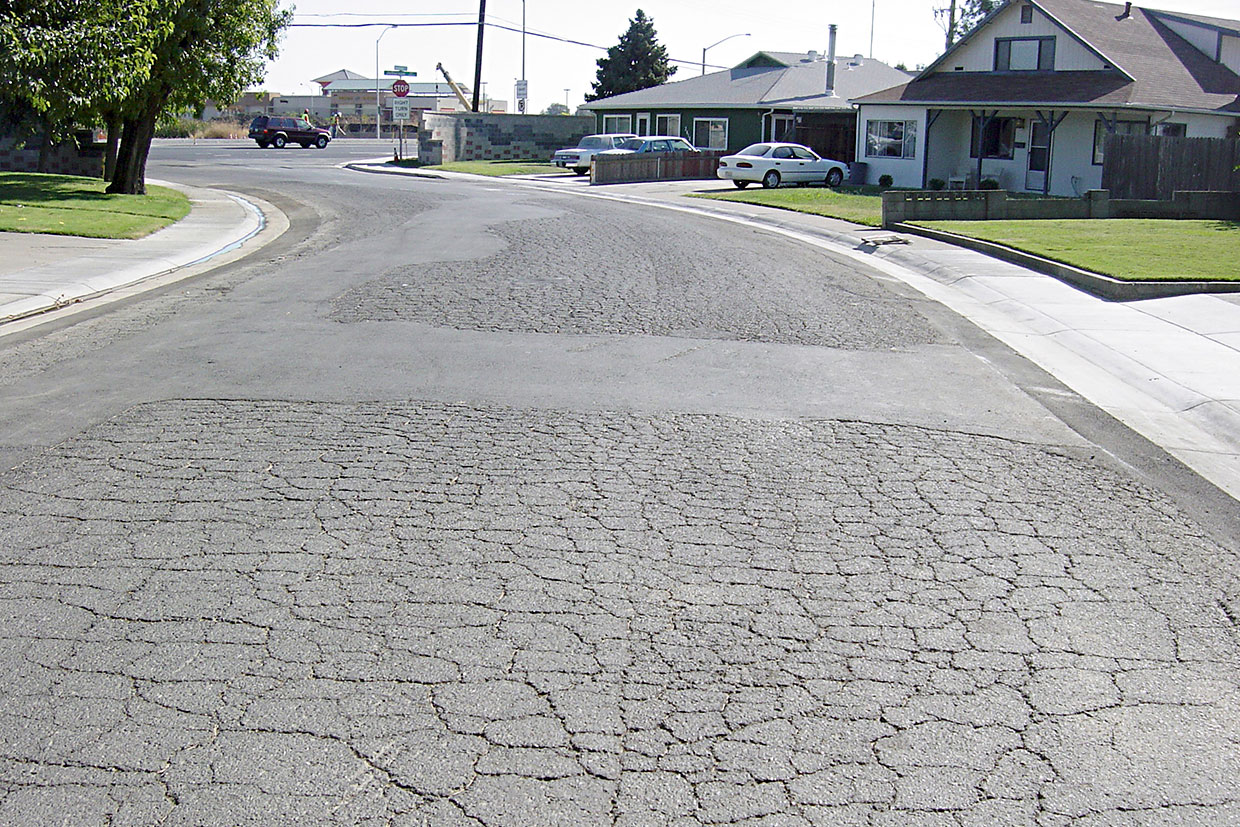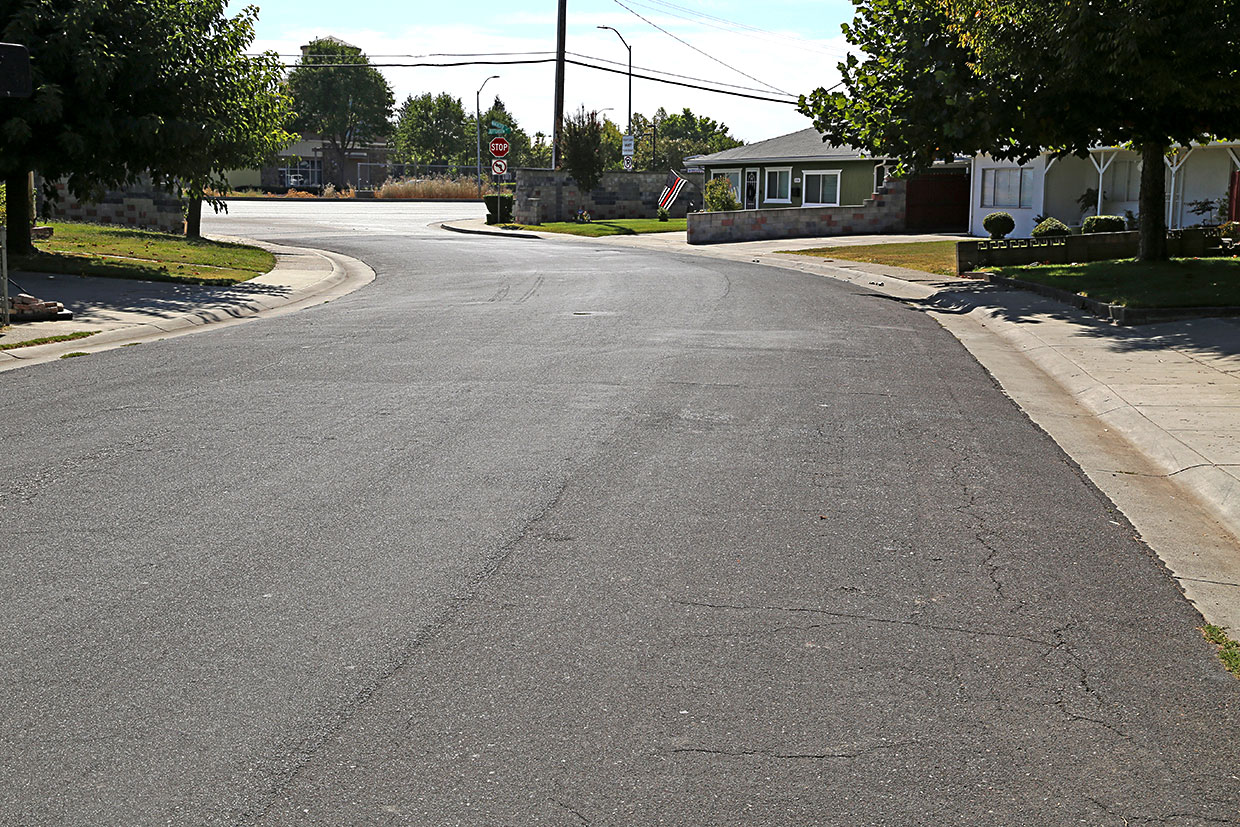- (209) 522-2277
- dpimley@americanpavementsystems.com
- 1012 11th St #1000, Modesto, CA 95354, USA
What We Do Best



Sadly, many agencies jump from slurry seals and Micro Surfacing directly to asphalt concrete overlays (hot mix) without looking at two cost-saving options that lie between these two bookends. When the cracks move into the 1/8” range, it is beyond a slurry seal. Slurry seals are meant as a first line of defense on newer roads. But 1/8” to 1/4″ alligator cracks are in the range where Conventional Chip Seals are effective. When the cracks move into the 3/8” to 1/2″ range, Asphalt-Rubber Chip and Cape Seals become a very good choice.
Conventional Chip Seals and Cape Seals are about 4-5 times less expensive than a 2” AC overlay. Asphalt-Rubber Chip and Cape Seals are about 3-4 times less expensive than a 2” AC overlay. So, if you pick the right roads, roads with the right sized cracks, you can get to a lot more roads each year than with an AC focus, and in that process, eliminate a lot more cracks each year, driving up your PCI scores, all with the same budget.
The contractor sets up the blending equipment early in the morning on the day of the job and starts the heating/blending process. The Performance Graded asphalt (PG 64 -10, PG 64 -16, PG 70 -10) which is chosen based upon the climate conditions where the job is to be performed is heated to 425° F. The car tire rubber and high natural rubber are loaded into their appropriate bins. When the asphalt reaches temperature, the asphalt and rubber are introduced to each other in a high-sheer blender, and then are sent to a large reaction vessel. The asphalt and rubber are reacted with constant agitation at high temperature (425° F) for 45 minutes per spec. Then a sample is drawn. A hand-held Haake Viscometer (torque meter) is inserted into the center of the sample can. A temperature probe is put in the can. When the mixture cools to 375° F, the operator takes a measurement of viscosity on the Haake Viscometer. The mix site operator is looking for a viscosity of 1,500 to 2,500 centipoises at 375° F. That is the range where the binder will fan out correctly when applied from a distributor truck. If the viscosity is too low (too watery), more rubber is added and reacted, and then another sample is pulled and tested. If the binder’s viscosity is too high (too thick), more asphalt is added and reacted further, and then a sample is pulled, and the viscosity is checked again.
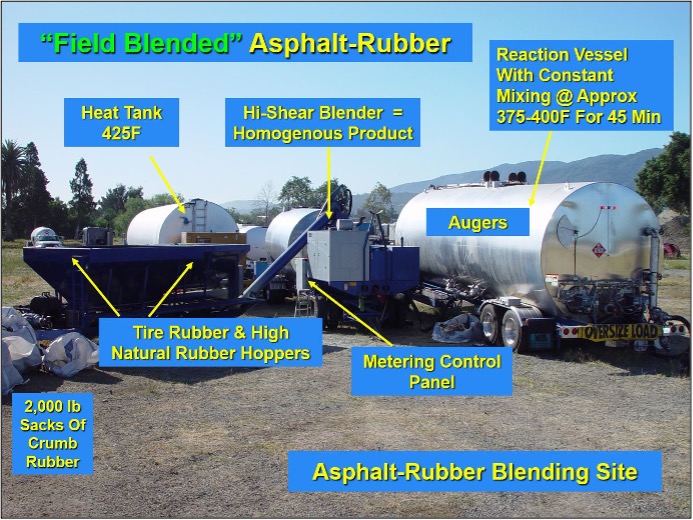
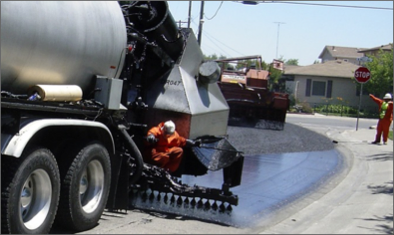
If it is an Asphalt-Rubber Chip Seal, it is finished off with a fog seal of CSS1 or CSS1h Emulsion, diluted 50% with water, and shot at 0.10 gallons per square yard to lock in the chips and give them a nice black color.
If it is an Asphalt-Rubber Cape Seal, a Type II Slurry Seal goes down over the top as “frosting” to smooth out the surface and get rid of the Chip Seal’s roughness to make it rollerblade, scooter, and skateboard “friendly”.
1. In the blending process at high temperatures, some of the car tire rubber digests into a very viscous gel. This gel changes the properties of the base PG graded asphalt, making it more flexible and more elastic. Flexible and elastic are good words to use when you are talking about inhibiting cracks. If a pavement is rigid and unforgiving, cracks have an easier time breaking through. But if the binder is flexible and elastic, it is harder to break when forces are exerted on it.
Think of the Asphalt-Rubber binder as a trampoline. How hard is it to break through something that is moving, is flexible, is elastic? The car tire rubber, blended at high temperatures, modifies the asphalt in a very positive way, making it less susceptible to reflective cracking.
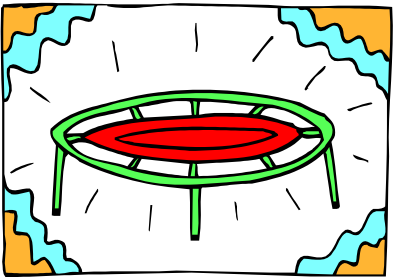
2. A second benefit of adding car tire rubber at high temperature to the base PG graded asphalt is that the chemicals that originally went into the manufacturer of the car tire to resist aging from UV and ozone leach out into and become part of the new Asphalt-Rubber binder. This is another reason why Asphalt-Rubber Chip and Cape Seals last as long as they do (12 to 15 years). The car tire rubber, at high temperatures, modifies the asphalt and S-L-O-W-S its normal aging process, which then slows the rate at which the modified Asphalt-Rubber binder cracks from aging.
In the 1930s and 1940s, car tire sidewalls routinely rotted out before the tread on the tire was gone. To overcome this problem, car tire manufacturers added anti-ozonates, carbon black, and antioxidants to the car tire rubber to combat these “aging” problems. Now car tires resist decay so well that they just sit in landfills, impervious to the elements.
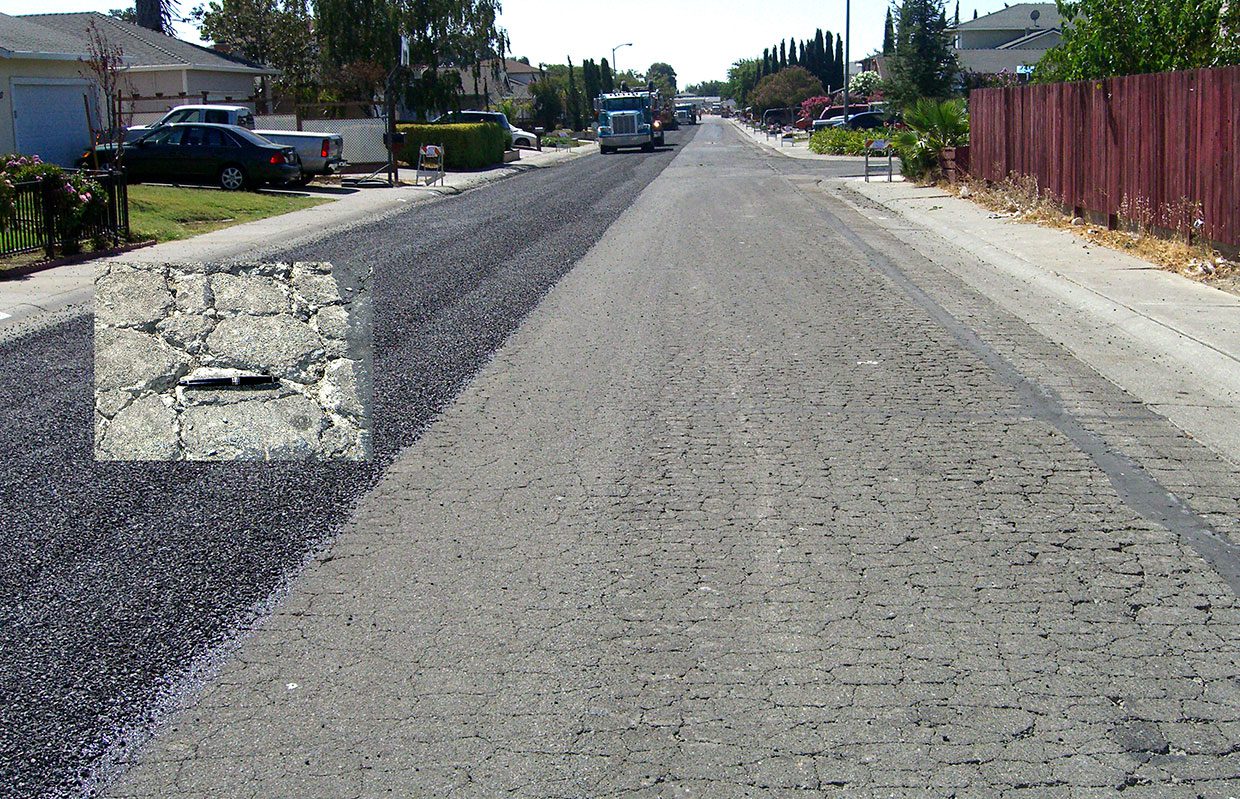
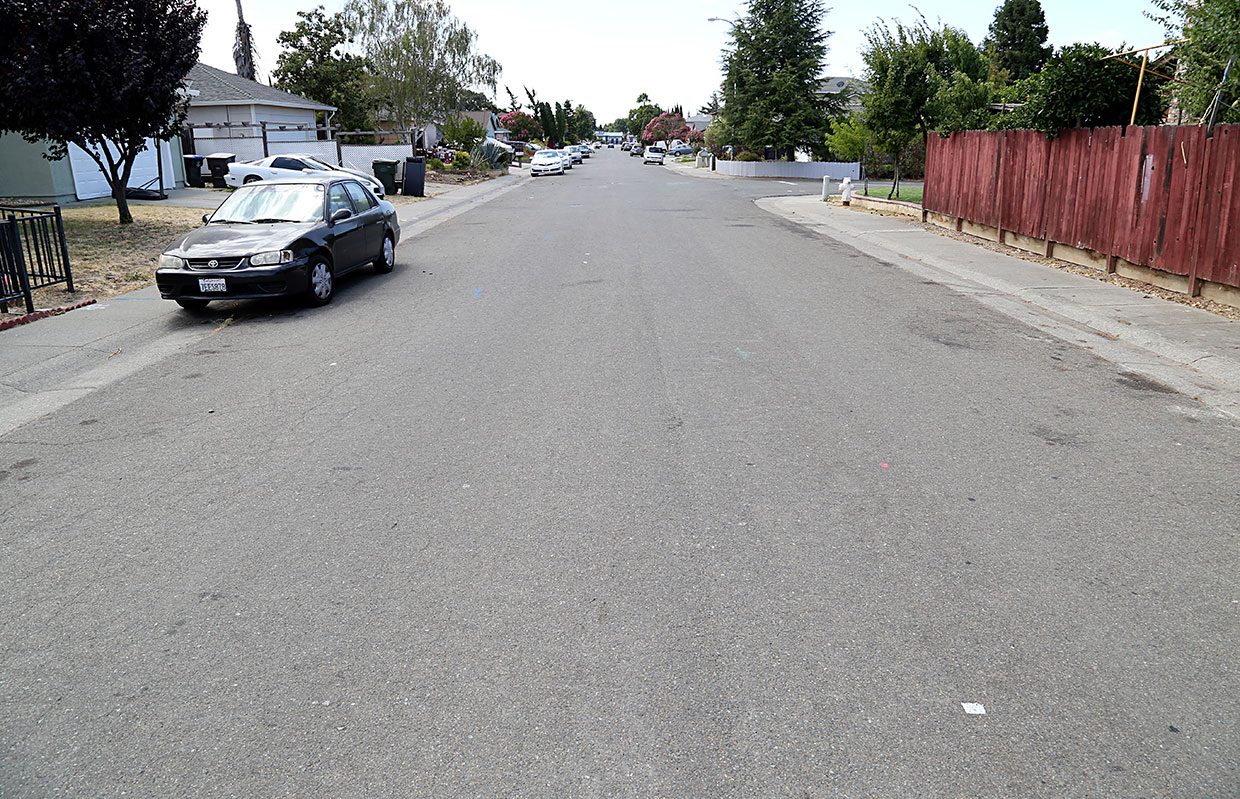
Scoter Way, Suisun
Before: September 2008 | After: August 2019 (11 YEARS LATER)
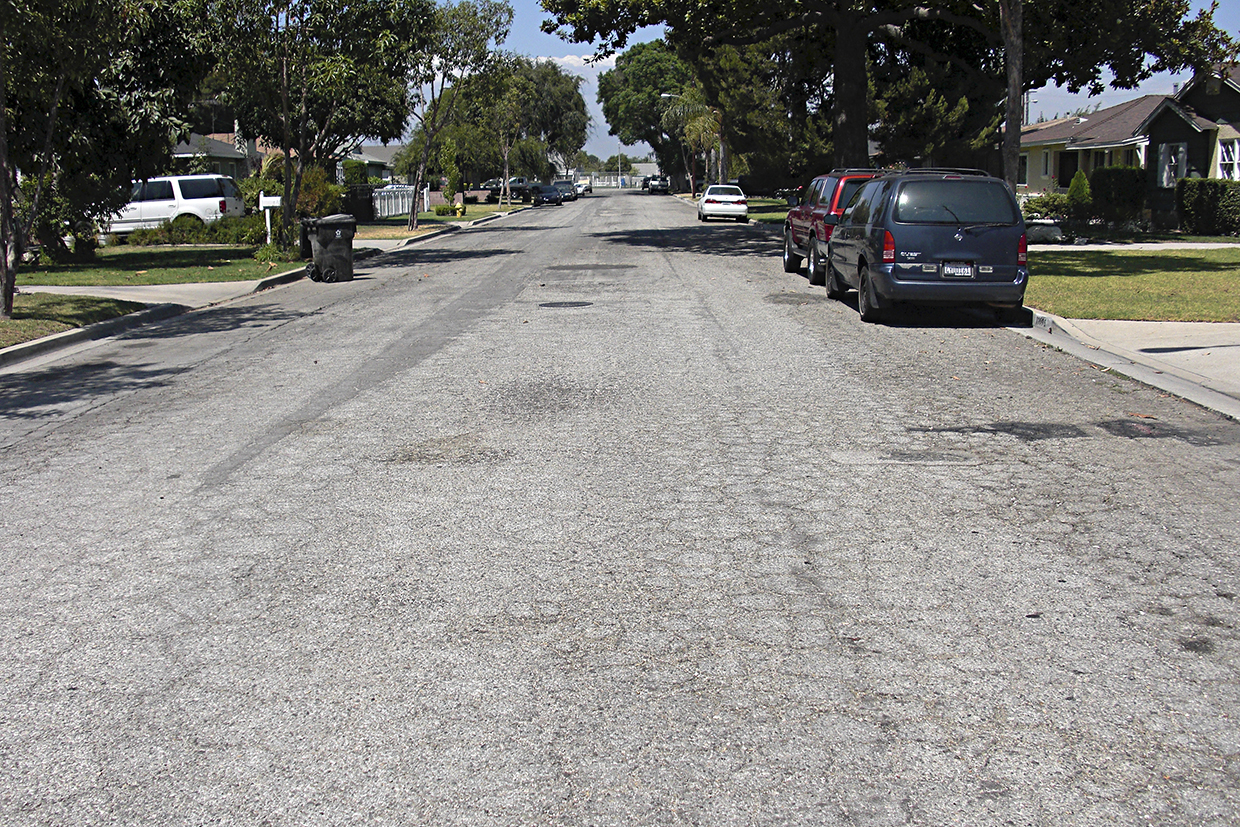
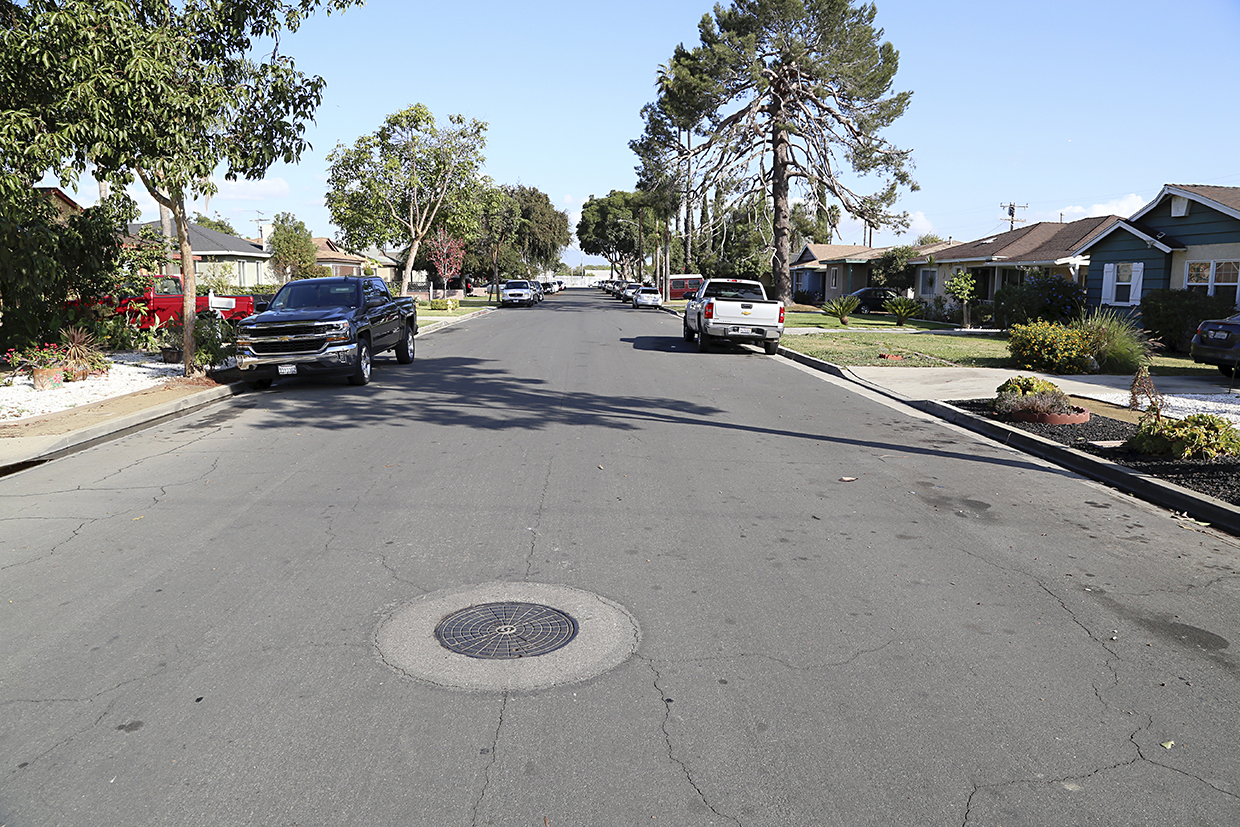
Lugo Park, Lynwood.
Before: May 2013 | After: August 2019 (6 YEARS LATER)
